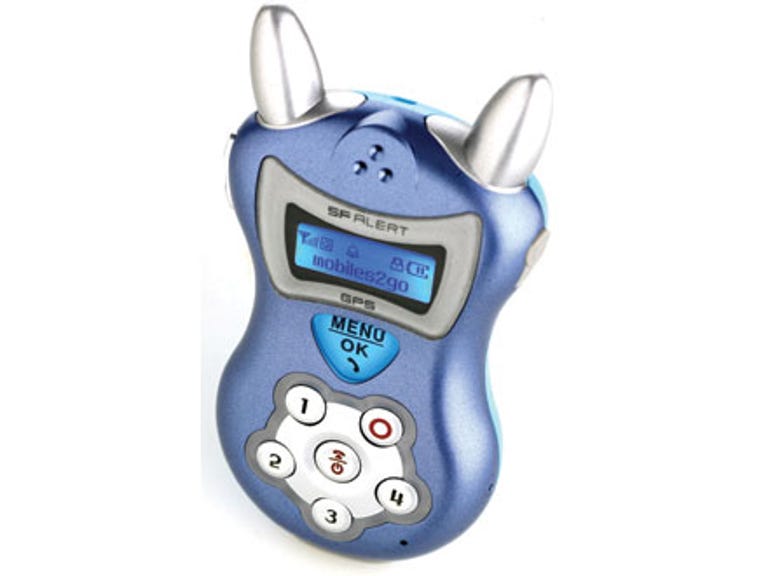 Why You Can Trust CNET
Why You Can Trust CNET mobiles2go i-Kids review: mobiles2go i-Kids
mobile2go's i-Kids mobile phone lets tweens call up to four pre-programmed numbers, while the GPS component lets concerned parents keep track of their children's whereabouts.
Design
The Good
The Bad
The Bottom Line
The i-Kids has few buttons, attempting quite appropriately to be as simple and easy to use as possible. Rather than a number-pad, it has 4 parent-programmable buttons. It has screen-lock and volume control buttons, and, strangely, an earphone jack. Navigating the menu is an uncomfortable experience with one hand due to the positioning of the buttons, and changing settings is made doubly hard with the tiny size and miniature, two-line LCD screen. The i-Kids' design is suitable for its purpose, however, and once configured, shouldn't cause any grief.
Features
You can also locate your child on command via SMS or the Web. As well, the i-Kids can receive but not send SMS messages. The i-Kids service quite a pricey deal -- after paying $229 for the handset and $36 for activation, the monthly fee is $28 and includes 30 minutes talk time, 10 traces and 3 changes of settings. Once you set these up it costs money to trace your child, change settings and be alerted via SMS of their leaving the safety zone.
One of the features of the i-Kids is that it only has 7 buttons on the front. 4 of them, when pressed, will call the numbers that parent sets on the Web site. This is to stop the child calling whomever they want to. A fifth button is for emergency situations, and when pressed it will cycle through the programmed numbers and if neither one answers it will put the child through to a helpdesk.
It's reasonable that the i-Kids is so barebones to keep down on size and safety issues, but for a device so limited the cost is a bit prohibitive. Speaking of costs, the billing information site that users are sent to from the included manual wasn't operational at the time of review, which was post release, so we were unable to see how the costs would be adding up or looking at billing details in real-time. It would be worryingly hard for an average parent purchasing this in the shops to set up and understand the system, seeing the trouble we at CNET experienced. The missing billing component, talked about as operational in the i-Kids box, is fabled to be "coming soon" on the Web site.
Performance
Unfortunately, when we pressed the emergency button, it went through one number successfully, but when the second one's voicemail system came through, it just kept looping and looping and never went through to the help desk. Obviously the system can't handle certain voicemail types -- which is potentially a serious flaw for a child in distress.
On the other hand, we never had a problem dialing the i-Kids or dialing from it, it functioned just a mobile phone should in that regard. The setting of the safety zones is done with Java in the browser, and is slow and clunky to use -- a faster desktop option would have been appreciated. The WAP interface for phone users was awkward and limited, though we had no troubles with the SMS traces.
